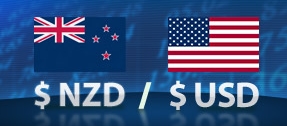NZD/USD Forex Pair
While the US Dollar is still the primary reserve currency chosen by the majority of central banks all over the world, the New Zealand Dollar has expanded its presence within global Forex trading. Over the last few years, the global trading share held by the NZD has increased, and it is now the 10th ranked trading currency on the global market. The NZD/USD pairing now accounts for almost 2% of the total trading turnover, making this pair the ninth most commonly traded pairing. The NZD to USD currency pair is considered to be a major pair because it involves the use of the US Dollar. The NZD/USD pair is sometimes referred to as the Kiwi pair, and it can be quite tricky to trade as it has a very low margin. This means that overtrading is a common problem, so this pair should only be traded by experienced investors, as those who are beginners in the Forex market may find that they experience unexpected losses when attempting to trade these currencies.
| Broker | Bonus | More |
|---|
The Economy and Currency of New Zealand
New Zealand is the world’s 54th nation in terms of its GDP, which stands at around $181 billion. It is also 69th in the world based on PPP. The economy of New Zealand is highly dependent on trade, yet because it has only a small territory and is located a considerable distance from most of the other major players in the world economy, it is consistently faced with international trading challenges. Australia, being the country’s nearest neighbour, has a major role to play in trading relations. Trade between the two countries is estimated to be at around $25.6 billion NZD, and almost 20% of the country’s exports are sent to Australia. New Zealand’s second biggest trading partner is China, 
New Zealand’s currency is the New Zealand Dollar, which is not only the currency of New Zealand itself but also of the Pitcairn Islands, Tokelau, the Ross Dependency, Niue and the Cook Islands. Originally, the New Zealand currency was the New Zealand Pound, until the Dollar was introduced in July 1967. Sometimes it is referred to as the Kiwi, named after one of New Zealand’s indigenous birds. The NZD is one of the world’s top 10 most-traded currencies.
The US Economy and Currency
The US Dollar, sometimes known as the Greenback, is divided into 100 cents, and is not just the currency of the United States itself but also of numerous other countries, with many more small nations pegging their own currencies to the value of the USD. As a strong and stable currency, the US Dollar is the most commonly held reserve currency by central banks all over the world, and is the world’s most popular trading currency in the Forex market. The US is the biggest economic power in the world with a GDP of around $17 trillion, making up around a quarter of global nominal GDP. It is the second-largest trading nation in the world after China. The United States economy is primarily oriented around the service industry, with around 80% of the country’s GDP being produced by such sectors as financial services, healthcare, transportation and real estate. America is also the second-largest world manufacturer, its leading industries being steel, petroleum, construction, telecommunications and electronics. The United States is also the third-largest world producer of oil, as well as being the largest global producer of natural gas.
Major Economic Indicators That Affect the NZD/USD Pair
There are numerous economic indicators that affect the exchange rate of the NZD USD pair. These include the following:
- The Reserve Bank of New Zealand (RBNZ)’s policy decisions on the Official Cash Rate and interest rates.
- The GDP of both nations.
- The Consumer Price Index (CPI) of both countries. This gives information about price changes in consumer items, and measures consumer inflation.
- The Producer Price Index of both countries. This reflects the performance of private-sector organisations, with both the Output and Input indexes measuring prices.
- Employment changes – Surveys such as the Household Labor Force Survey offer data regarding the rates of employment and unemployment, as well as the hours worked and the number of people employed in different industries.
- Trade balance – The economies of both the United States and New Zealand are dependent on international trading, but this is especially the case with New Zealand, with their main exports being wool, fish, vegetables and fruit, dairy produce and meat.
- Political events in both countries and in those countries that have a close trading partnership with either nation, including Australia and China
Carry Trading and the NZD to USD Pair
The NZD/USD pair is a good choice for carry trades, in which an investor sells a currency that has a relatively low rate of interest and purchases one with a higher yield, thus profiting from the interest rate differences. The Official Cash Rate (OCR) in New Zealand only accelerates slowly over a long period, while the Federal Reserve Bank has maintained its benchmarked rate; and while this difference in the country’s interest rates is maintained, the carry trade strategy is an excellent one for this currency pairing. This could, however, change in the future depending on both nations’ financial and economic policies, and the pace and timing of any possible rate hike.


